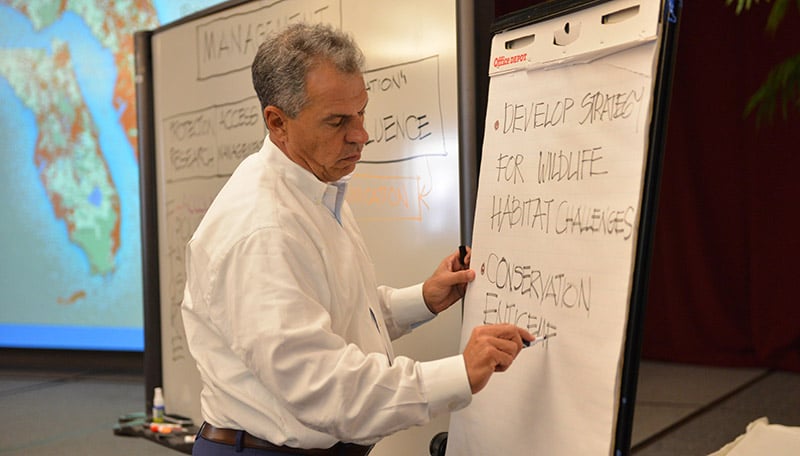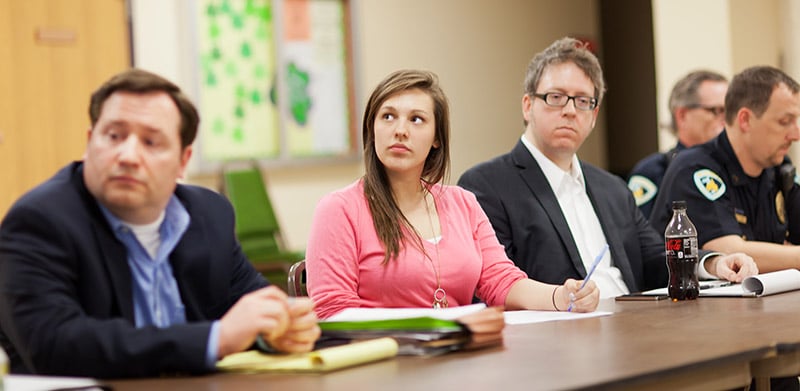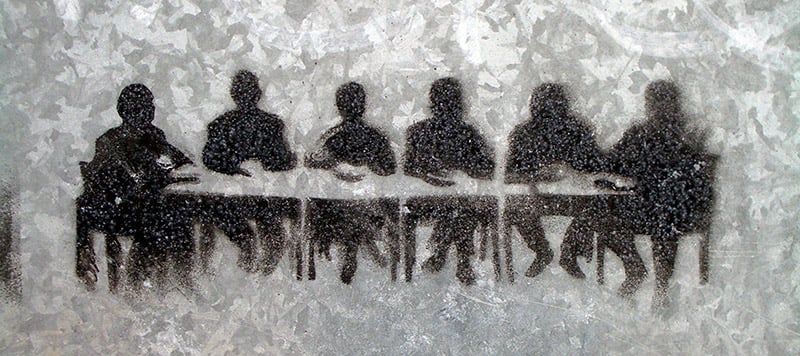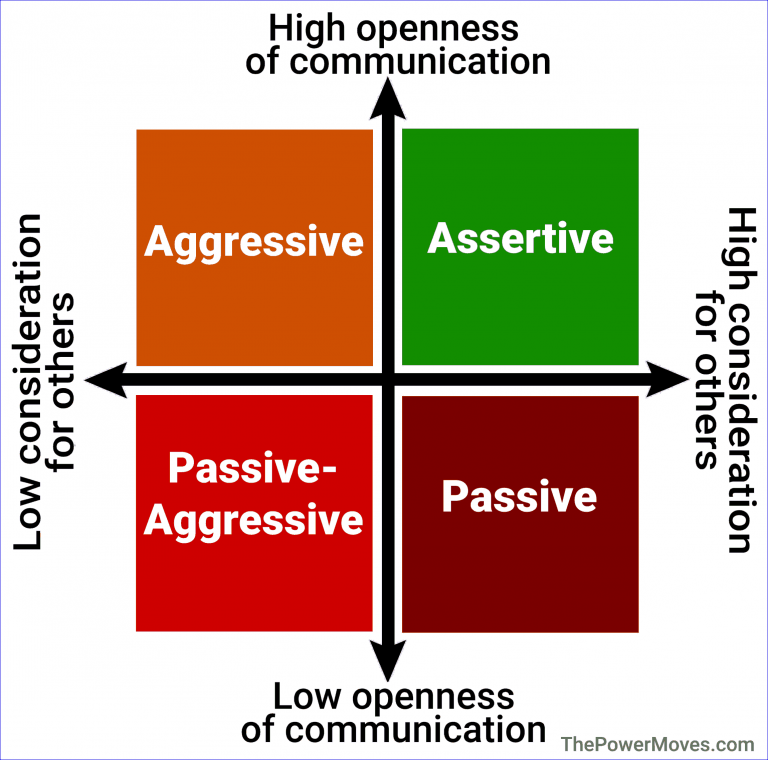Who Does What in a Collaborative Meeting: Defining Meeting Roles
When you hold a collaborative meeting, one key to getting results is deciding on who does what. If you define the meeting roles of the people invited, everyone knows what to expect. If you don’t define those roles, someone’s time is being wasted.
Okay, so how do you do this? Start by assigning your roles. Here’s the set of roles we use for a typical team meeting; some kinds of meetings may have more, and sometimes one person holds multiple roles, but this is the core.
1. The Leader

The leader has these responsibilities:
- Set the goal. Every meeting should result in a work product of some kind, whether that’s a decision, a set of action items, a document, whatever. The leader defines that goal.
- Choose the participants. The leader is responsible for including the right people to make the meeting go. Part of this is leaving out people who are not needed. Only include the people who really need to show up; others might just get notes about the outcome of the meeting.
- Make the agenda with the facilitator. The leader owns the topics to be covered in the agenda, works with the facilitator to make sure the agenda will achieve the meeting goal and delegates detail management to the appropriate people.
- Schedule the meeting.
- Lead discussion. The leader provides the context for discussions, connecting each topic back to the meeting goal.
- Ensure that the goal is met. A whole article could be written on this. The basics: assign action items and make sure you have group agreement within the team about what you have decided or created.
- Follow up. Ensure that a record of the meeting is created, distributed to participants (and others), and that any next actions actually get done.
The leader has a big job, but is supported by….
2. The Facilitator

The facilitator exists to make things easy. It’s a role that’s often left out of meetings, and that’s a shame because it’s vital to improving collaboration. While the meeting leader owns the goal and desired result for the meeting, the facilitator owns the process used to achieve that goal. Here’s what the meeting facilitator does:
- Creates the agenda with the meeting leader. Agendas layout the plan for the meeting, outlining which steps the group will take to achieve the meeting goal.
- Run activities during the meeting. If your meeting includes an icebreaker, voting, brainstorming, ranking, or any other organized activity, the facilitator runs this process.
- Plan those activities beforehand. The facilitator needs to have a hand in agenda building, for this reason.
- Keep participants involved. Keep things moving, engage people, and make it easy to achieve the goals set out by the leader.
For more on what meeting facilitation is all about, check out this article from Mind Tools and pay particular attention to the “toolbox” at the bottom.
3. The Note-Taker

In most collaborative meetings, everyone is empowered to take notes, record action items, or otherwise help keep a record of what happened. But ultimately, you want someone whose job it is to make sure that happens accurately. Here’s what the note-taker is signed up to do:
- Take pertinent meeting notes. Record the main points of the discussion and what the group decides. Do not transcribe everything that everyone says. It’s counterproductive to write down everything. It is far better to write down the outcome, because that’s what your team will act on later.
- Record action items. When someone is assigned to (or signs up to do) a task, record that. If a due date is associated with the action, speak up and make sure you record that too.
- Review and clean up the notes afterwards. Because many people may contribute to note-taking, you may end up with duplicate or confusing notes. The note-taker is responsible for reviewing the meeting record and making sure it is clear, concise, and accurate. This is best done immediately following the meeting, and helps the leader follow up with the team.
Important note: the note-taker is not responsible for making people perform their action items — that’s up to the leader. The note-taker is simply responsible for making sure those action items get recorded properly.
Depending on your team structure, you may experiment with shifting the note-taker role on a weekly basis, or even between agenda items. You will find that it’s hard to talk and take notes at the same time; if you’re leading any part of the discussion or facilitating an activity, hand the note-taking role to someone else during that time.
4. The Participant

Most meetings have participants beyond the roles listed above. These are team members who are collectively responsible for the result. But it’s important to note that participants aren’t just there to shut up and listen. Participants are there to:
- Speak up. Participate in the meeting by speaking when appropriate, and volunteering information.
- Tune in. Focus on the meeting and give it real attention. If you’re reading Twitter while in a meeting, you’re doing it wrong. (Or, perhaps, your meeting is improperly run.)
- Follow up. Do the things that are assigned after the meeting.
- Provide feedback to the leader. If you find yourself sitting in a meeting that doesn’t need you, let the leader know. If you have nothing to add to the discussion, learn nothing from the meeting, and have no stake in the outcome of the meeting, those are strong indicators that you shouldn’t be in that meeting. On the other hand, if the meeting goes well, that’s valuable feedback too!
Tips for Assigning Roles
- Try to have one person in each of the first three roles. When one person has to fill multiple roles (for instance, leader and note-taker), it’s easy to lose focus.
- Be aware that every meeting should have an outcome. Meetings shouldn’t happen for their own sake. An effective leader will set, communicate, and adjust those outcomes over time.
- Give feedback. Everyone should give feedback to the leader in order to improve future meetings.
Images: meeting leader courtesy of tiarescott; facilitator courtesy of Florida Fish and Wildlife; note-taker courtesy of John Benson; meeting room stencil courtesy of Richard Rutter. All images used under Creative Commons license.



